The Lofoten Islands rise from the Norwegian Sea like a jagged wall of granite peaks and emerald waters, creating one of the world’s most dramatic archipelagos. For over 1,000 years, fishing villages have dotted these islands’ coastlines, their red wooden buildings perched on stilts above the water like something from a fairy tale. These communities have survived Arctic storms, economic changes, and the march of modernization by adapting while staying true to their maritime roots.
What makes Lofoten’s fishing villages extraordinary isn’t just their stunning beauty—it’s how they’ve maintained their authentic character in an age when many coastal communities have lost their connection to the sea. Here is a list of 15 traditional fishing villages in Lofoten that continue to embody Norway’s deep relationship with the ocean.
Nusfjord
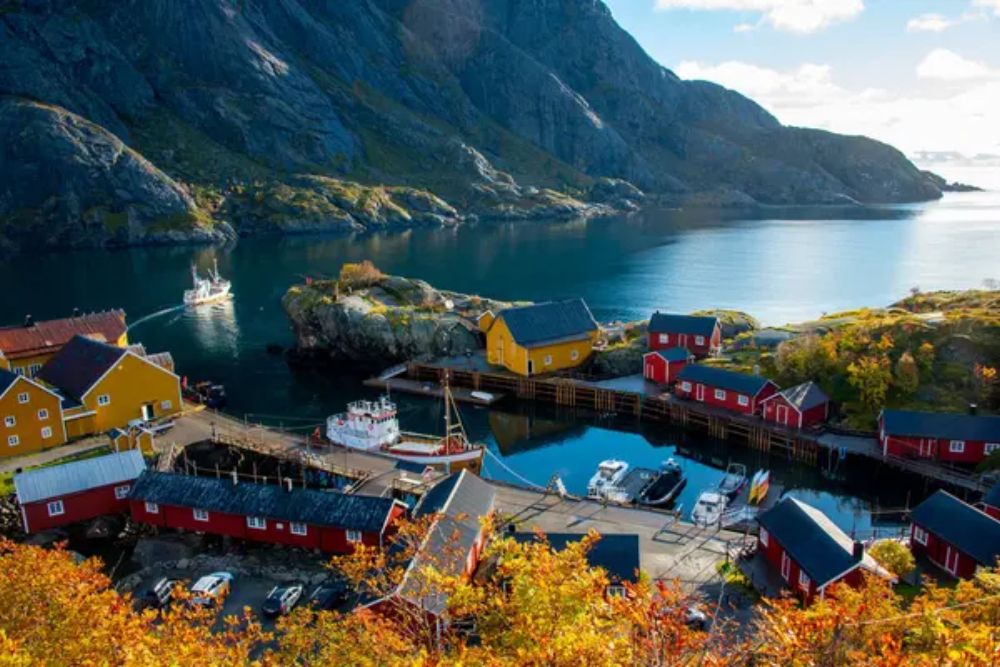
Often called Norway’s best-preserved fishing village, Nusfjord looks exactly like a 19th-century postcard come to life. The village’s collection of red rorbuer (fishermen’s cabins) sits on wooden stilts above a natural harbor that’s been sheltering boats for centuries. What sets Nusfjord apart is its completeness—the general store, drying racks for cod, and traditional boats create an intact picture of how these communities once functioned.
Today, visitors can stay overnight in restored fishermen’s cabins and experience the village much as seasonal workers did during the height of the Lofoten fishery.
Å
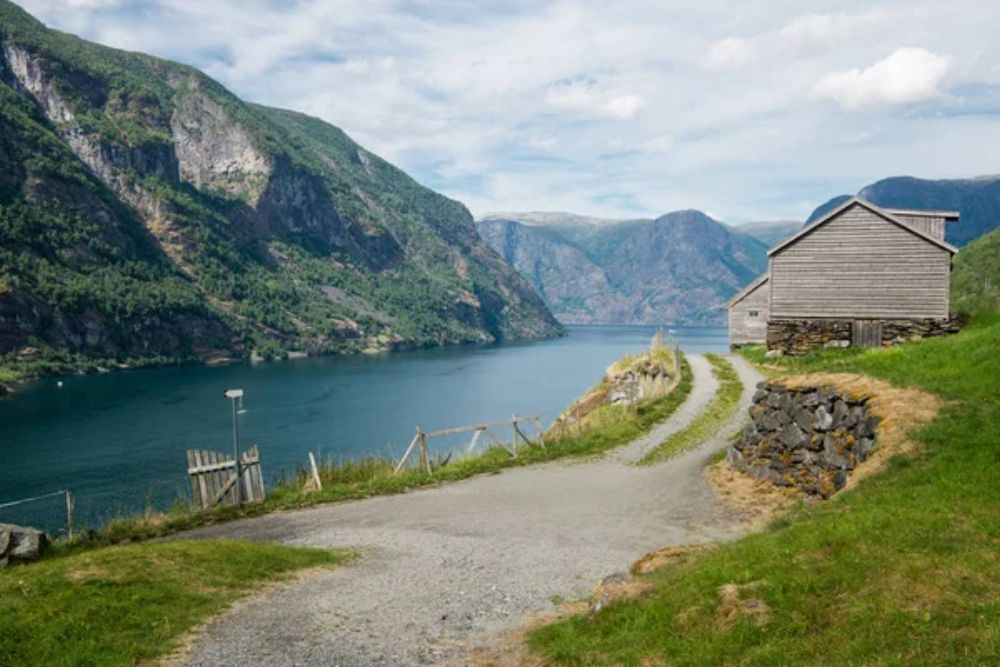
With a name that’s literally the last letter of the Norwegian alphabet, this village sits at the very end of the Lofoten road and feels like the edge of the world. Å’s traditional buildings house both a fishing museum and a working bakery that’s been serving the community for generations.
The village’s location provides access to some of Lofoten’s most pristine hiking trails, while its small harbor still welcomes fishing boats returning with their daily catch. Despite its remote location, Å maintains a surprising vitality that shows how traditional communities can thrive when they embrace both heritage and innovation.
Like Travel Pug’s content? Follow us on MSN.
Reine
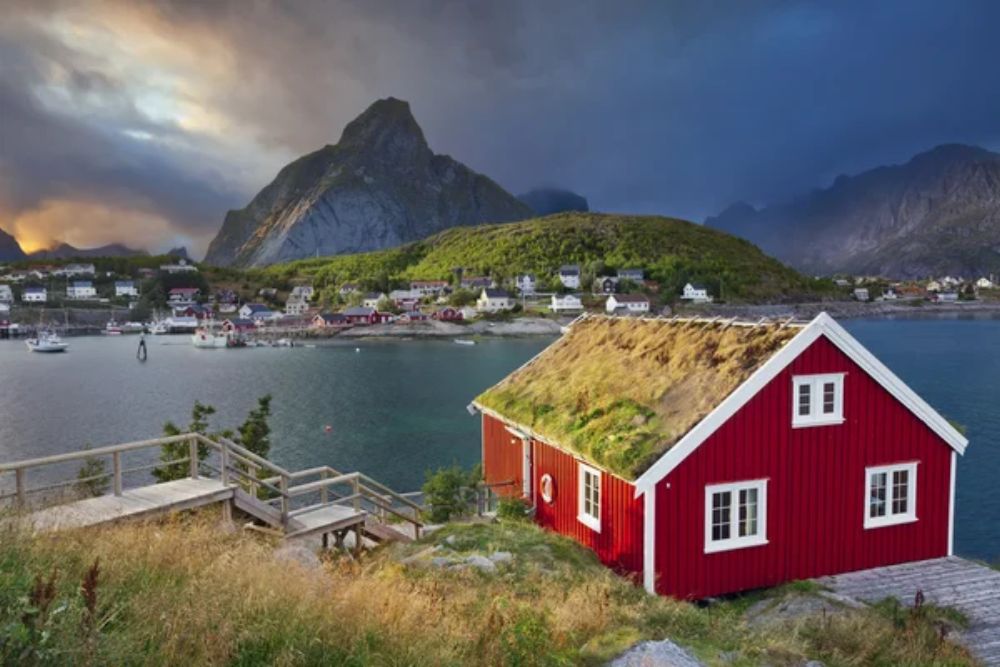
Reine consistently appears on lists of the world’s most beautiful villages, and one look at its red buildings reflected in the mirror-calm waters explains why. This tiny community of about 300 people sits beneath towering peaks that seem to rise directly from the sea, creating a dramatic backdrop that photographers travel thousands of miles to capture.
The village maintains its fishing traditions while serving as a base for outdoor adventures, with local operators offering everything from traditional fishing trips to midnight sun expeditions. Reine proves that beauty and authenticity can coexist without one compromising the other.
Henningsvær
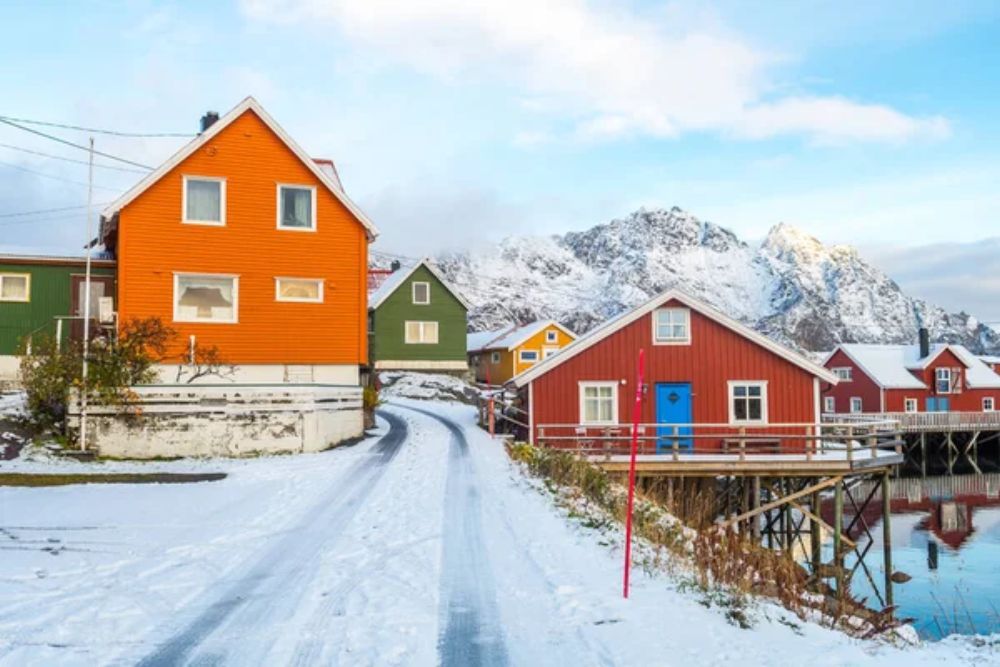
Known as the ‘Venice of Lofoten,’ Henningsvær spreads across several small islands connected by bridges, creating a unique maritime setting. The village’s collection of traditional buildings includes converted fish processing plants that now house art galleries and restaurants, showing how fishing communities can evolve while honoring their past.
During winter, the harbor fills with boats participating in the Lofoten fishery, one of Norway’s most important seasonal fishing events. Henningsvær’s combination of working harbor, cultural attractions, and stunning scenery makes it a perfect example of how traditional fishing villages can adapt to modern tourism while maintaining their essential character.
Sakrisøy

This tiny village consists of just a handful of red rorbuer perched on a rocky outcrop surrounded by turquoise waters and dramatic peaks. Sakrisøy’s isolation and small size have helped preserve its traditional appearance, making it look much as it did a century ago.
The village serves as both a working fishing station and a photographer’s dream, with its iconic red buildings appearing in countless images that capture Lofoten’s ethereal beauty. What makes Sakrisøy special is its perfect scale—small enough to feel intimate but complete enough to represent everything that makes Lofoten’s fishing villages unique.
Like Travel Pug’s content? Follow us on MSN.
Hamnøy
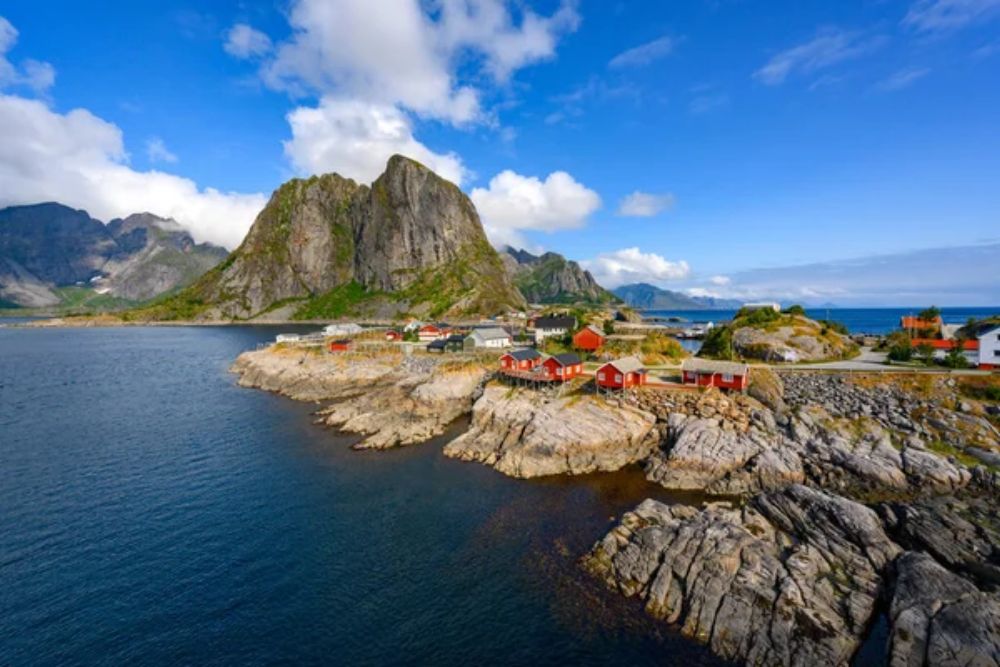
Connected to Sakrisøy by a short bridge, Hamnøy represents the quintessential Lofoten fishing village in miniature. The village’s handful of traditional buildings sit on a small island barely larger than a football field, creating an incredibly concentrated example of Arctic fishing architecture.
Hamnøy’s rorbuer have been carefully maintained in their original red color, and the surrounding waters provide some of the clearest reflections you’ll find anywhere in Lofoten. The village’s tiny size means every building matters, creating a composition that feels almost too perfect to be real.
Ballstad
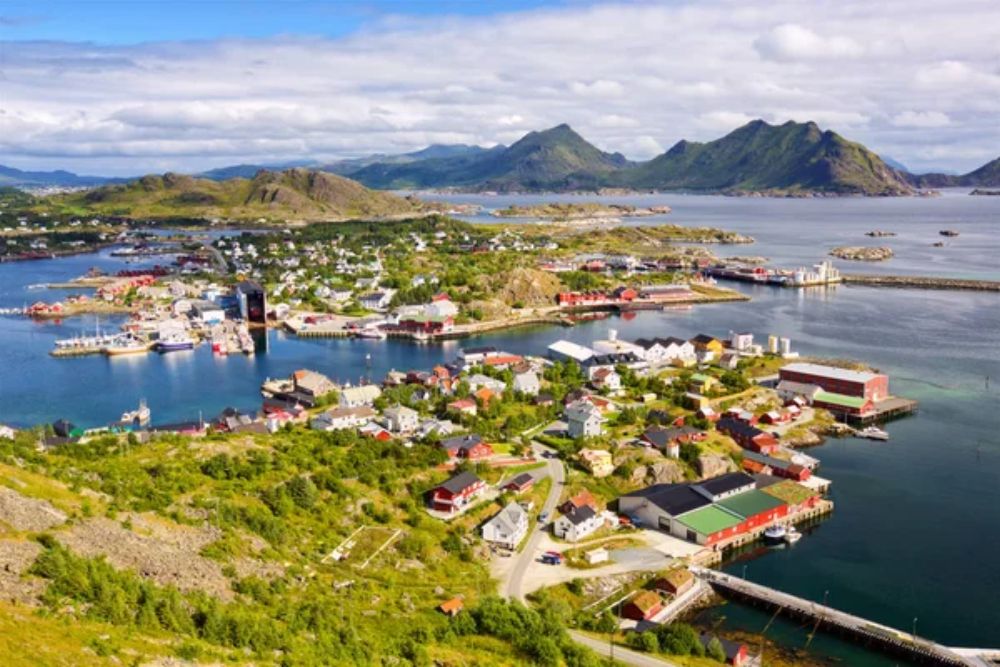
One of Lofoten’s larger fishing villages, Ballstad maintains an active harbor where commercial fishing boats work alongside pleasure craft and tourist vessels. The village spreads along a natural bay that provides excellent protection from North Atlantic storms, explaining why it’s been continuously inhabited for centuries.
Ballstad’s fish processing facilities still operate during fishing season, creating the authentic sounds and smells that remind visitors this isn’t just a scenic destination but a working community. The village’s size allows it to support restaurants, shops, and services that make it a practical base for exploring the surrounding area.
Stamsund
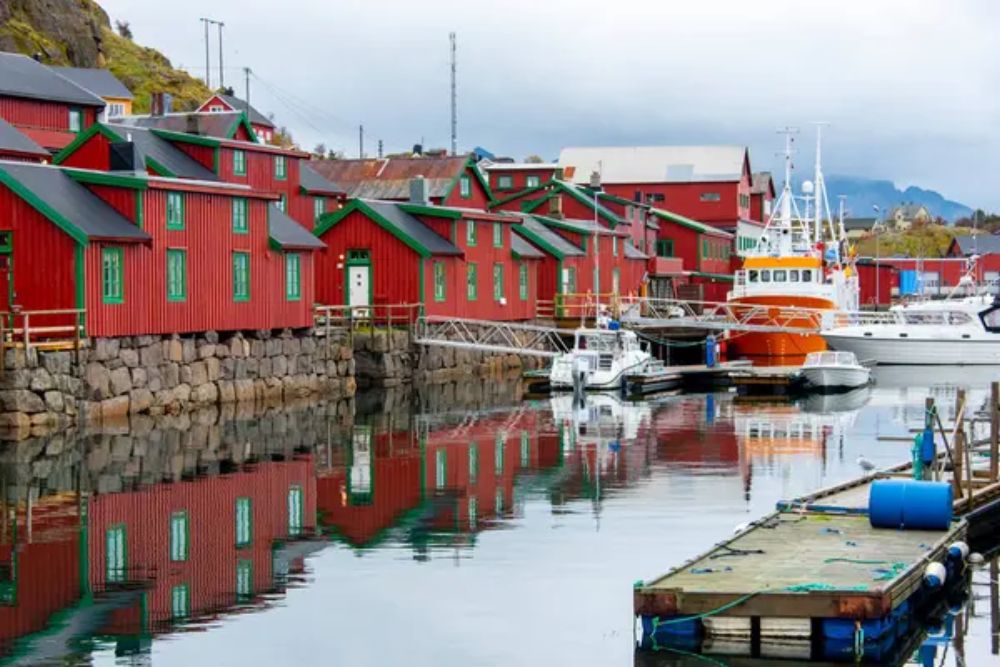
As one of Lofoten’s transportation hubs, Stamsund connects the islands to mainland Norway while maintaining its identity as a traditional fishing village. The village’s harbor serves both the car ferry and numerous fishing vessels, creating a constant bustle of maritime activity.
Stamsund’s collection of traditional buildings includes several that now house cultural attractions, including a museum dedicated to the Lofoten fishery. The village demonstrates how transportation links can enhance rather than diminish a community’s traditional character when development is handled thoughtfully.
Like Travel Pug’s content? Follow us on MSN.
Kabelvåg
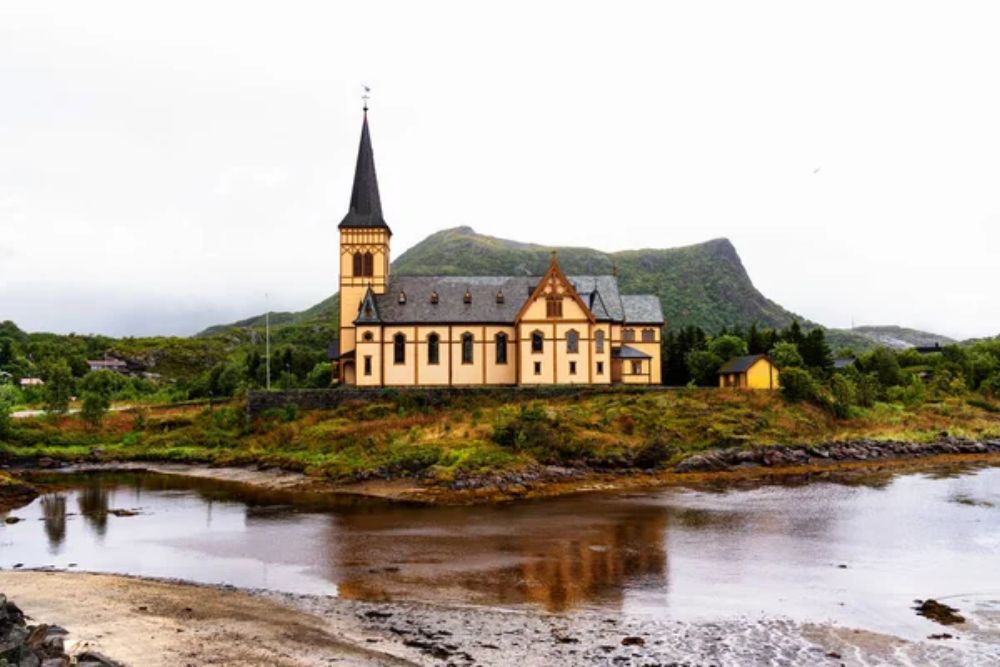
Once known as the ‘unofficial capital of Lofoten,’ Kabelvåg was the center of the islands’ fishing industry during its 19th-century heyday. The village’s impressive wooden church, built in 1898 to serve the thousands of seasonal fishermen who worked here, still dominates the skyline.
Today, Kabelvåg combines its fishing heritage with cultural attractions, including the Lofoten Museum that tells the story of the islands’ maritime traditions. The village’s relatively large size and historical importance make it an excellent place to understand how the Lofoten fishery shaped these island communities.
Mortsund
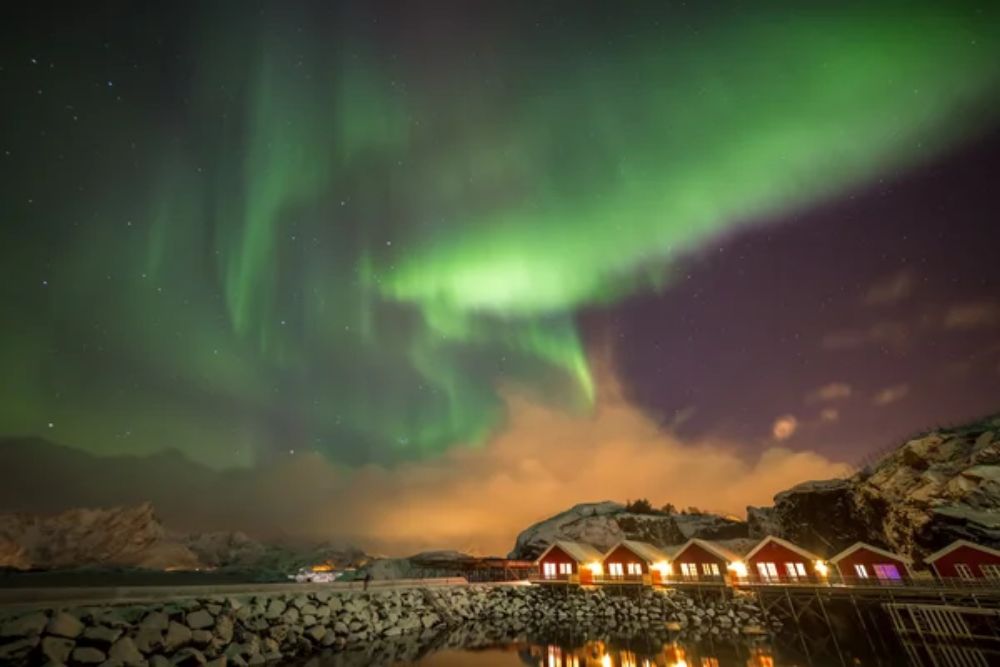
This working fishing village maintains a more local atmosphere than some of Lofoten’s better-known destinations, offering visitors a chance to experience authentic community life. Mortsund’s harbor hosts both traditional fishing boats and modern vessels, while its waterfront buildings include active fish processing facilities alongside tourist accommodations.
The village’s location provides access to excellent hiking trails and some of Lofoten’s best fishing spots, making it popular with visitors who want to experience the islands’ outdoor opportunities. Mortsund shows how fishing villages can balance tourism with their traditional economic activities.
Ramberg
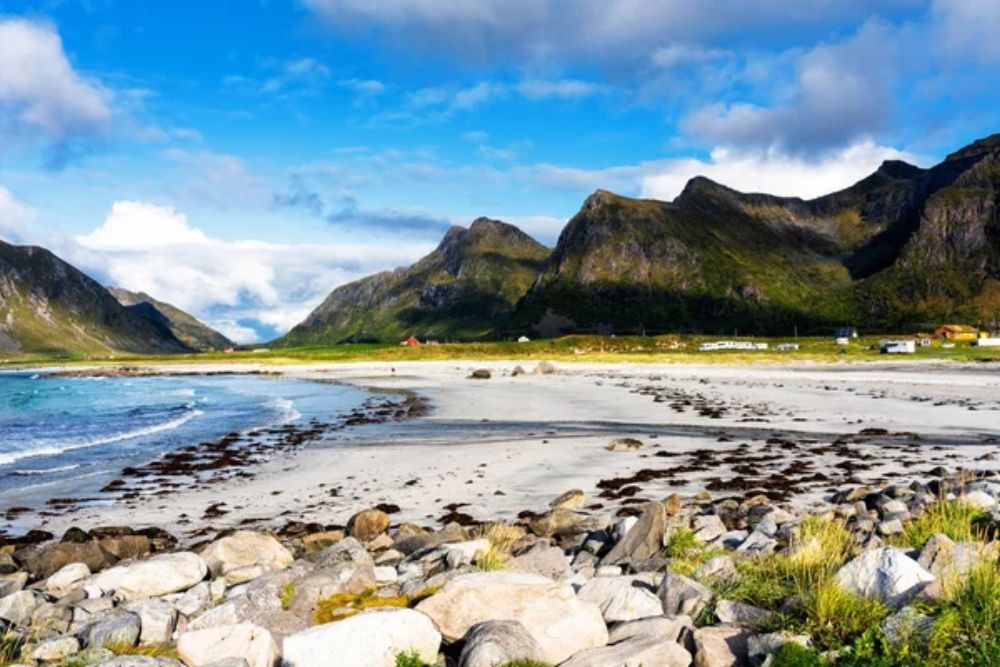
Known for its unusual white sand beach that seems impossibly out of place in the Arctic, Ramberg combines traditional fishing village elements with unique natural features. The village’s red buildings provide a striking contrast to both the white sand and the dramatic peaks that surround the area.
Ramberg’s beach, formed by coral and shell fragments rather than typical Nordic materials, creates a Caribbean-like setting that challenges expectations about Arctic landscapes. The combination of traditional architecture and unexpected natural beauty makes Ramberg one of Lofoten’s most photographed villages.
Like Travel Pug’s content? Follow us on MSN.
Fredvang
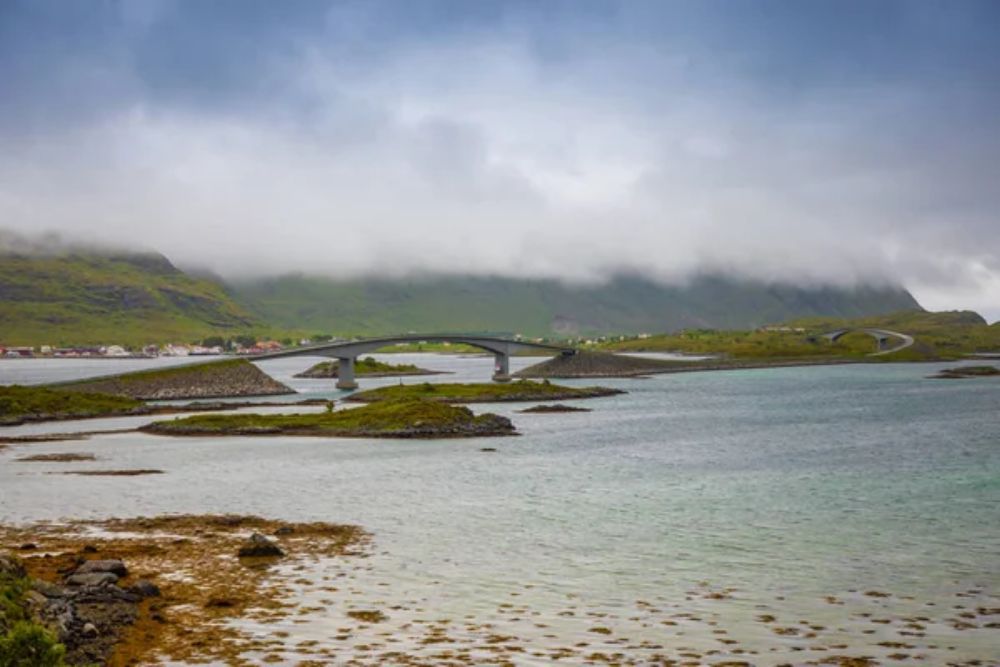
This small village occupies several islands connected by impressive bridges that seem to leap across the water between dramatic rocky outcrops. Fredvang’s scattered layout creates multiple viewpoints where traditional red buildings appear perfectly framed by mountains and sea.
The village maintains several working fishing operations while also serving as a base for outdoor activities like sea kayaking and hiking. Fredvang’s unique geography, with buildings distributed across multiple islands, creates constantly changing perspectives that reward exploration and make every visit feel different.
Skrova
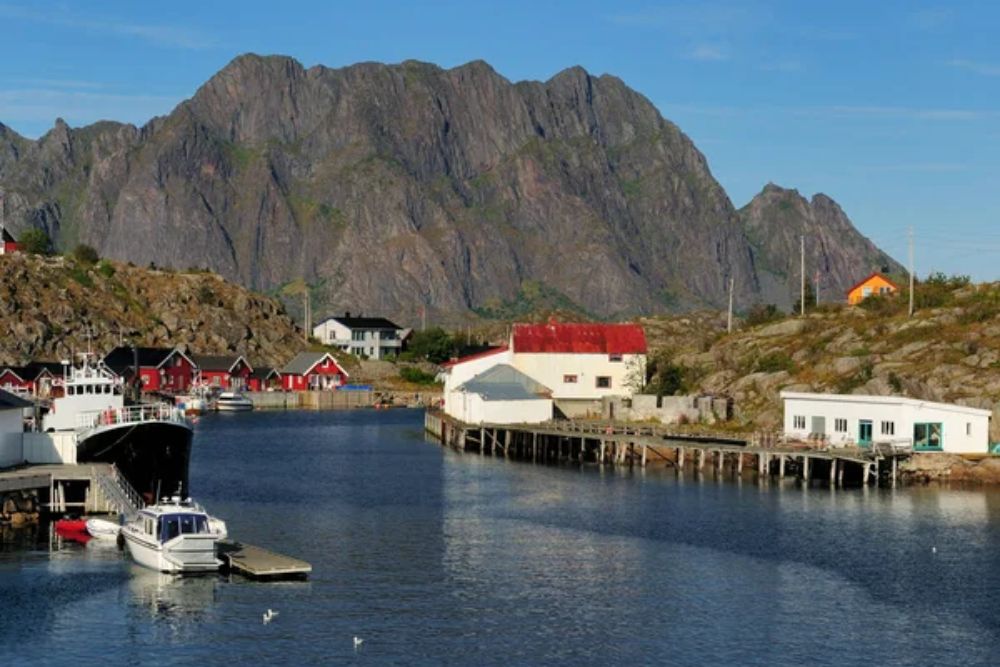
Reached only by ferry, Skrova maintains an isolation that has helped preserve its traditional character and close-knit community feeling. The island village hosts one of Lofoten’s most important fishing harbors, where large vessels land catches that supply markets throughout Norway and beyond.
Skrova’s separation from the main road system means it operates on a different rhythm, more closely tied to fishing seasons and weather patterns than tourist schedules. The village offers visitors a chance to experience island life much as it’s been lived for generations, with the sea playing a central role in daily activities.
Sørvågen
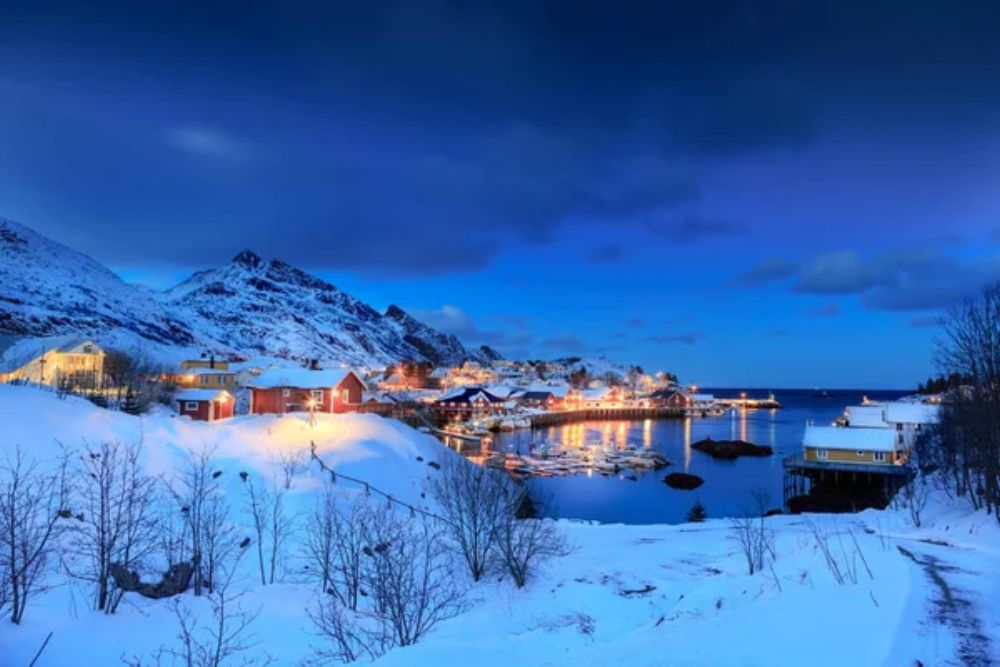
Located near the southern tip of the Lofoten chain, Sørvågen feels more remote and weather-beaten than villages closer to the main transportation routes. The village’s buildings show the effects of centuries of Atlantic storms, with weathered wood and sturdy construction that speaks to the challenges of life in this environment.
Sørvågen maintains active fishing operations while also serving hikers heading to nearby peaks that offer some of Lofoten’s most spectacular views. The village’s position at the edge of the island chain gives it a frontier feeling that connects visitors to the courage required to build communities in such dramatic landscapes.
Like Travel Pug’s content? Follow us on MSN.
Tind
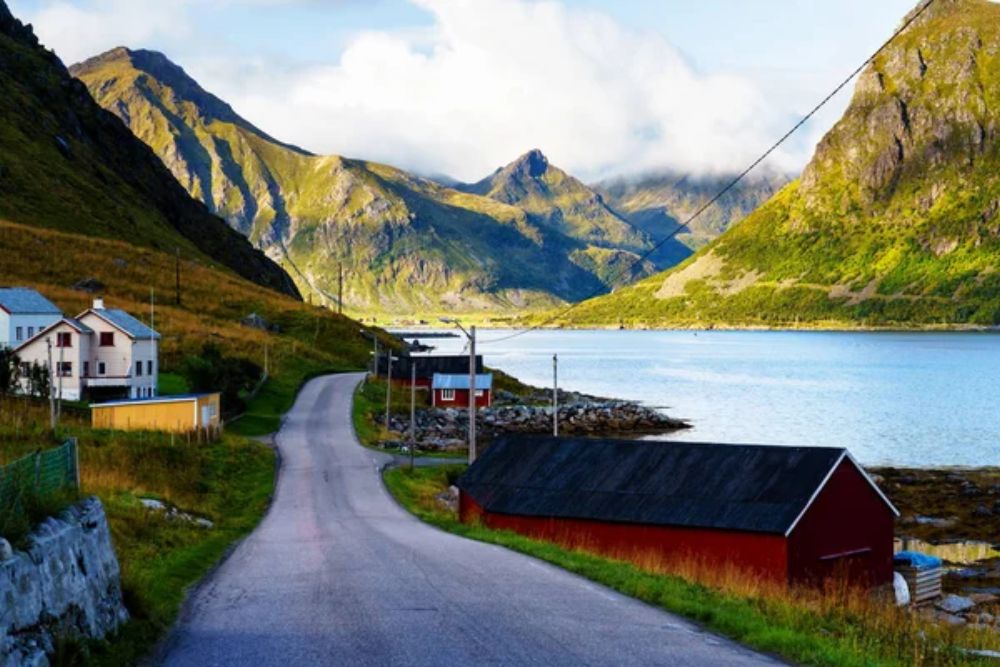
One of Lofoten’s smaller and less visited villages, Tind offers an intimate look at traditional island life without the crowds found at more famous destinations. The village’s handful of traditional buildings cluster around a small harbor that provides shelter for local fishing boats and the occasional visiting yacht.
Tind’s quiet atmosphere and spectacular mountain backdrop create a peaceful setting that feels removed from the modern world. The village demonstrates that even the smallest communities can maintain their traditional character when residents value their heritage and visitors approach with respect for local customs.
Where Sea Meets Sky
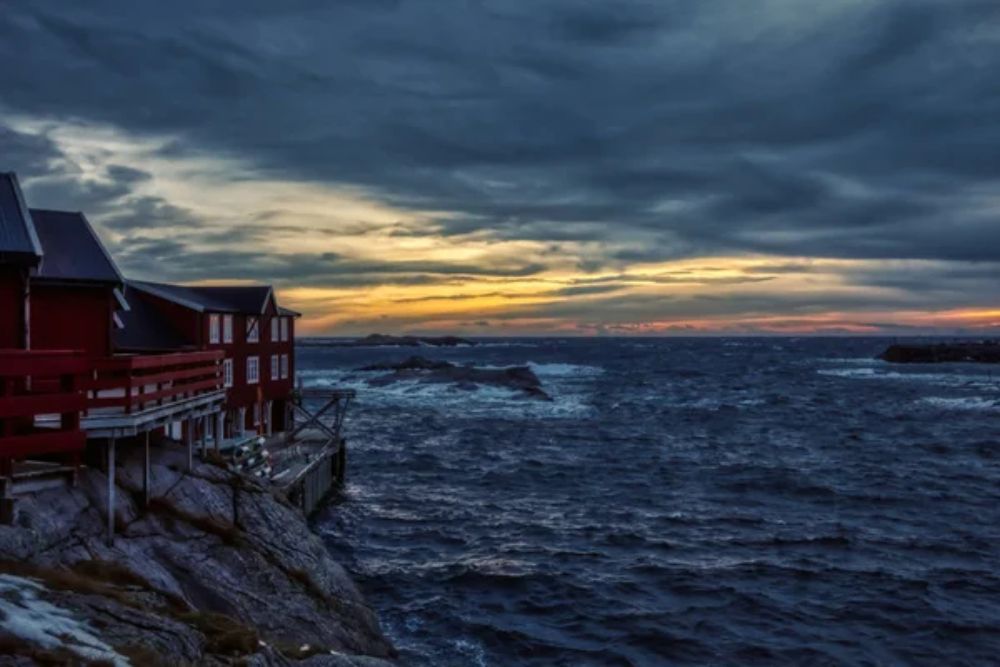
These Lofoten fishing villages represent something increasingly rare in our connected world—communities that have maintained their authentic character while adapting to changing times. Each village tells a story of human resilience in one of Earth’s most challenging yet beautiful environments, where survival depended on understanding both the sea’s generosity and its dangers. Their red buildings against turquoise waters and granite peaks create scenes that seem almost too dramatic to be real, yet they represent centuries of practical adaptation to Arctic conditions. Visiting these villages isn’t just about witnessing spectacular beauty—it’s about experiencing communities where the relationship between humans and the sea remains as vital today as it was a thousand years ago.
More from Travel Pug

- 20 Best Beach Towns in the Carolinas
- 13 Destinations Where Tourists Regularly Regret Their Trip
- 20 Destinations That Are More Magical Without an Itinerary
- 20 Underrated Adventures That Belong on Your Travel List
- 20 Cities Where You Should Just Wing It, No Planning Required
Like Travel Pug’s content? Follow us on MSN.
